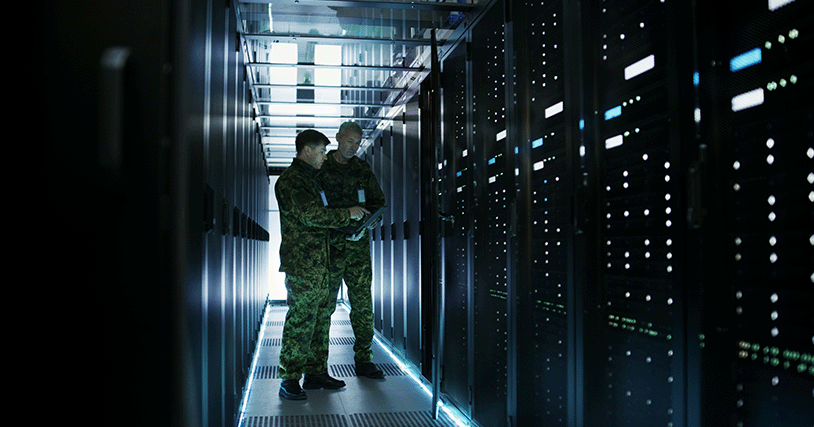Advanced Networking Made Simple: What is Network Management vs. Orchestration?

One of the top trends in defense communications, noted Rick Lober, vice president and general manager of Hughes Defense & Intelligence Systems Division, is increased usage by the Department of Defense (DoD) of multi-constellation, multi-transport communications technologies that utilize Software-Defined Networking. These solutions help ensure resilient SATCOM that can connect commanders and soldiers and enable secure tactical communications and quicker decision-making, even in contested environments. They also demand a whole new level of network management — or orchestration.
Network management ensures that all the shared resources — the files, data, apps, video, and devices — are available to users quickly and efficiently when they need them. Network orchestration, on the other hand, is the process of automatically programming behavior across a network, or across multiple networks, devices, and even multi-vendor systems.
Artificial Intelligence (AI) and Machine Learning (ML) factor into both network management and orchestration, making it possible to automate tasks so they transpire faster and more accurately than human operators can perform them. Orchestration is essential across distributed networks, like military SATCOM, because tasks have become far too complex for manual intervention.
One example stems from the broad mix of legacy and emerging technologies that don’t always operate well together in the field. Without orchestration, incompatible networks require “translation” technology and numerous man-hours to reprogram and reconfigure equipment to connect two or more systems — or to switch from one satellite system to another. With orchestration, however, such tasks can occur in fractions of a second. This is especially important as DoD builds out 5G networks.
AI/ML-driven network orchestration can make it possible for terminals to autonomously select and interoperate between different SATCOM terminals, systems and services. This capability delivers highly secure, flexible and resilient communications. An example of orchestration in action, the Hughes software-defined Terminal Management Agent (TMA) ensures uninterrupted connectivity by helping a satellite terminal to ‘self-heal’ or redirect a terminal to a new satellite, waveform or service when interference or jamming degrades or disrupts a transmission.
All enterprises today need orchestration to ensure network availability, speed, and performance, but when it comes to the DoD’s increased use of multi-constellation, multi-transport communications technologies and its goal to achieve more resilient SATCOM, orchestration is imperative.